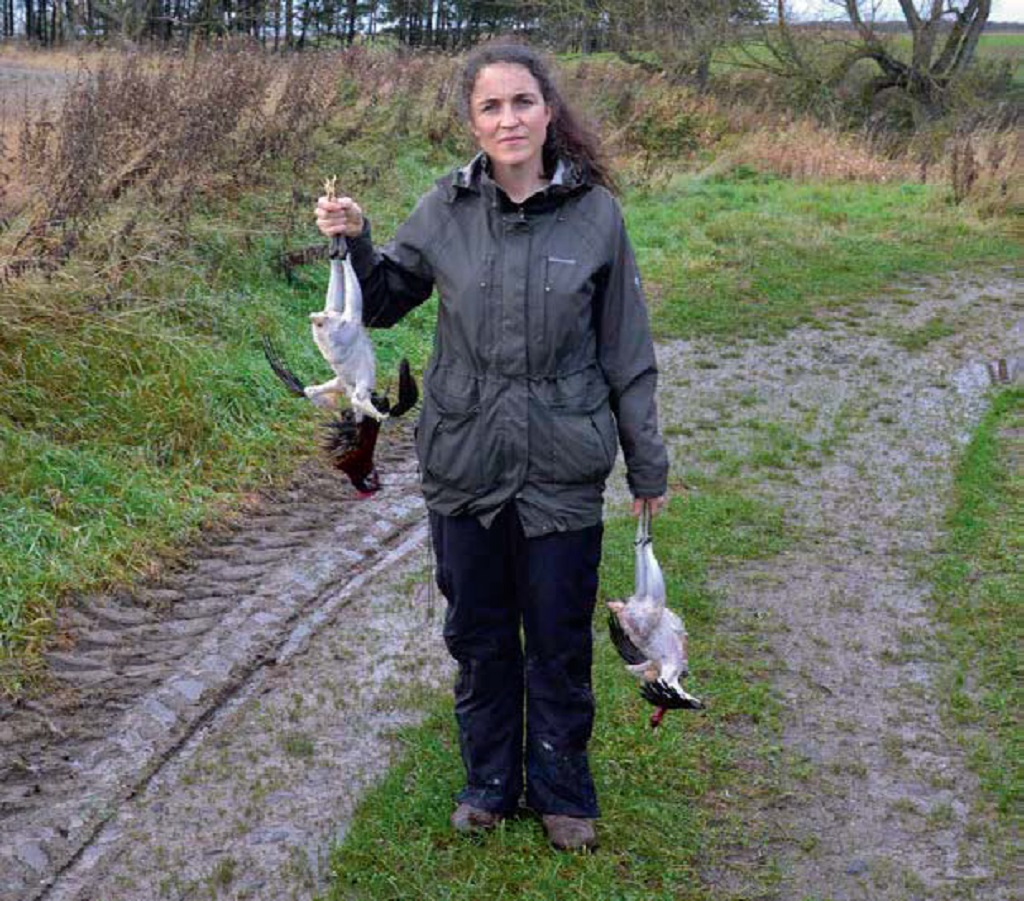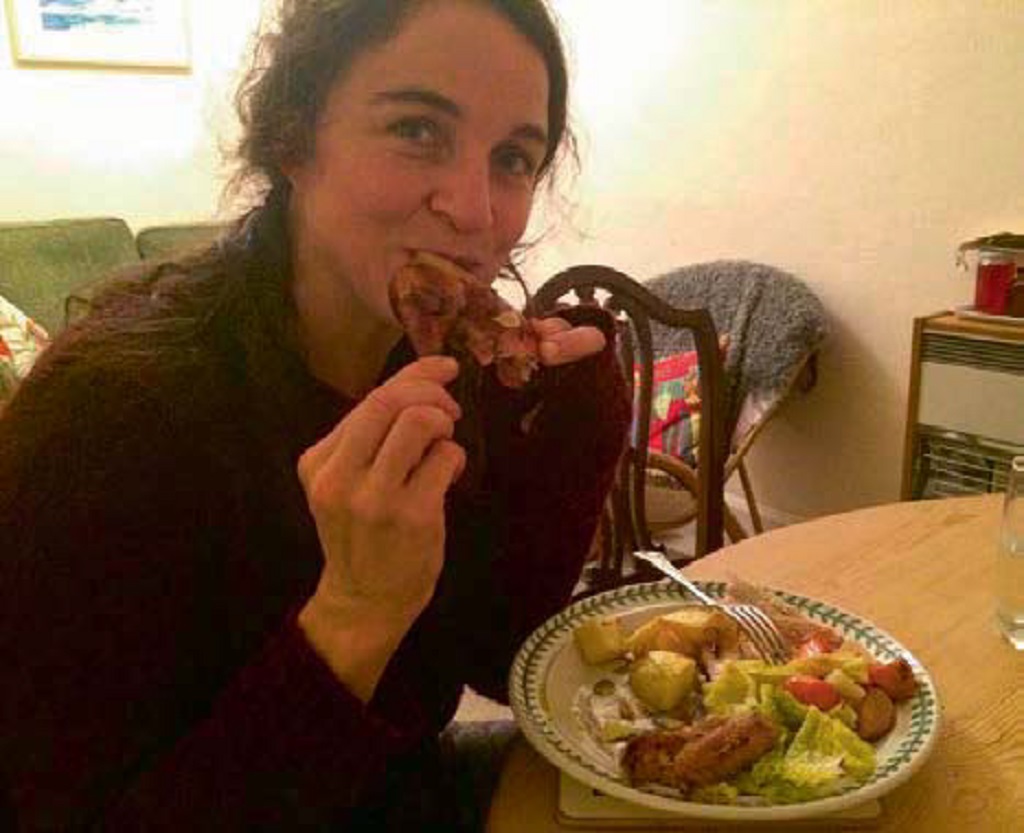
Feed your soul with a slow-grown Scottish chicken
When it comes to a roast chicken dinner, buying Scottish and choosing a slow-grown bird will satisfy more than your stomach.
Roast chicken used to be a luxury enjoyed in the Easter holidays or a treat at the weekend. Some of the older generation may remember seeing chickens slaughtered in the backyard for a particular feast.
Now we eat 2.2 million chickens every day in the UK and more than 49 billion worldwide. It is the most popular meat in Britain and, after pork, the second-most popular meat in the world. There are already more chickens on the planet than humans.
As an Ethical Carnivore, I wanted to find out for myself how chickens are produced so cheaply and, just like my ancestors, kill and prepare one for myself.
My first step was to visit an intensive chicken farm, where most of the chickens we eat are raised. Around 95% of the chickens we eat in this country are barn reared; just 4.5% are free range and 0.5% are organic.
The chicken ‘farms’ (some say factories) are those long windowless barns with feed hoppers at the end that you often see from the motorway. On one chicken farm there could be ten barns housing up to 40,000 chickens in each. The ‘stocking density’, or how much room each chicken gets to move, could be 38kg per square metre – barely one sheet of A4 paper.
I went to visit an RSPCA-assured farm where the chickens had a bit more room to move. It was still an ‘intensive’ farm, but, honestly? It wasn’t that bad. Chickens are, after all, the descendants of South Asian junglefowl, they like warm, dry, shady areas. They are also flock birds. I watch them spar and dust bathe. They seem to have quite a comfortable life – they just don’t get long to enjoy it.

Louise Gray holds two roosters that have been killed and plucked by hand
The average broiler chicken will live for 43 days and in future they are hoping to grow a ‘crop’ in just a month. In the more-intensive units, this can cause a common problem called ‘going off their legs’. This is when the birds, bred to grow as fast as possible, collapse under the weight of their enormous breasts. Breeders claim this problem has been solved, but you will still see tell-tale blisters and hock burns when you are buying cheap chicken in the supermarket.
When they get to the end of their short lives, chickens are loaded into crates and taken to the processor. Most are killed by CO2, or ‘gas stunned’ in a chamber. They are then shackled and their throats cut with a rotating blade, and bled.
The carcasses are dipped in scalding water to loosen the feathers and plucked in a machine. In some processing units, the birds are also gutted and packaged by a machine. A chicken could go through the whole process and the first time it comes into contact with a human is when it enters your mouth.
It’s a long way from poultry in the backyard and in many ways it’s a reflection of the wider industrialised food system. Chicken farming has been increasingly centralised, which has had a negative effect in Scotland. The sell-out of the Grampian Food Group to a multinational in 2008, meant that many farmers lost their contracts. It is a real shame, because Scottish farmers were thought to produce the best broilers, fed on locally grown grain.
Sadly the few remaining chicken farmers are struggling and the National Farmers Union Scotland (NFUS) predict we could lose the one processing plant we have left in Coupar Angus. Robert Thomson, vice chairman of the NFUS Poultry Working Group, said the only chance the industry has is if consumers demand Scottish chickens. ‘Look at the labels,’ he warns. ‘And try to buy Scottish chicken.’
It is also possible to buy organic chickens from Scotland. These birds live a longer life, up to 12 weeks, and roam outdoors eating grubs and corn. This varied diet and exercise makes them taste better, but they also cost a lot more.
I watch the free-range flock at Hugh Grierson’s farm in Perthshire scratch around under the solar panels. Chickens are thought to be ‘bird-brained’, but in fact they are intelligent, considered to have better numeracy skills than a toddler. The chickens here are killed on the farm by hand, with the respect they deserve. I wanted to source a chicken for myself. Fortunately a friend had one too many roosters on his campsite threatening to cause trouble come the summer.
Usually the Humane Slaughter Association (HSA) would recommend that chickens are stunned before slaughter, but on smallholdings where the equipment would be expensive and difficult to maintain, while the travel would be stressful for the birds, they recommend ‘neck dislocation’ by an expert.
You could not get more of an expert than my Uncle Kenneth, who was taught by his grandfather, my great grandfather. On the phone, he is only surprised that I have not carried out this basic task before. Some farmer’s daughter I turned out to be. He reassures me that I will be fine if I keep calm and follow instructions.

The proof is in the eating as
Louise Gray tastes the difference with her slow-grown bird
The young roosters are black, glossy fighting cocks. They calm in our hands and when the moment comes it is quick and gentle.
I feel sad for this beautiful bird, with his fine red wattle and bronze neck, but as we begin to pluck the birds, I feel quite calm. This is what we have done for generations, I think, it’s why the chickens are here. I would certainly rather eat this rooster than a chicken with hock burns.
I take the chicken home and draw it in my kitchen, wondering how it can be so cheap to buy chicken breasts when actually it takes quite a long time to prepare a bird.
It is worth it. I am frequently told that slow grown chicken is better, more flavoursome, and this one roasted and eaten with friends is delicious. But what is even better is the stock. I feel as if I am eating this amazing little animal slowly and with gratitude, and it is not only the flavour that is good for my soul, it is knowing the chicken had a good life. True chicken soup for the soul.
(This feature was originally published in 2016)
TAGS

